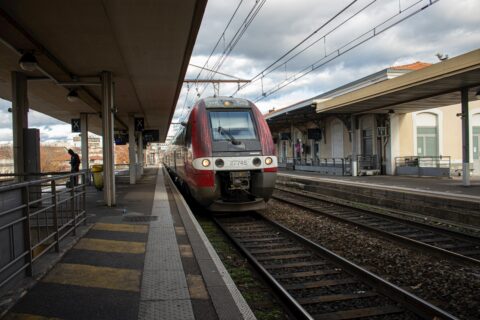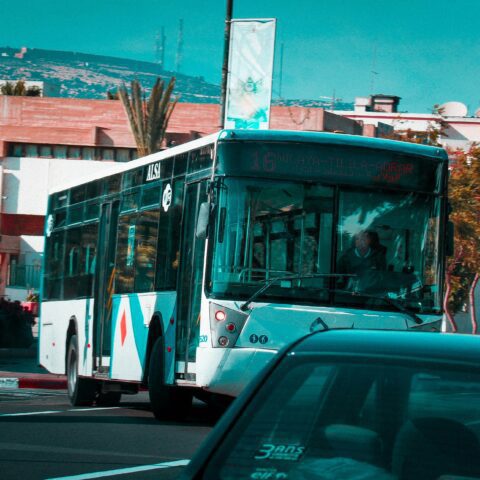Introduction to the Current State of Transportation
Welcome to the fast-paced world of transportation, where we’re constantly on the move, racing against time to reach our destinations. But have you ever stopped to think about the impact our daily commute has on the environment? The truth is, traditional modes of transportation such as cars and buses contribute significantly to air pollution and greenhouse gas emissions.
Fortunately, there’s a growing movement towards sustainable transportation alternatives that not only help reduce our carbon footprint but also offer numerous benefits for individuals and communities alike. In this blog post, we’ll explore some of these options and discover how we can make greener choices when it comes to getting around.
So buckle up (or maybe unbuckle in this case) and join us as we embark on a journey towards a more sustainable future! It’s time to reimagine our commute and embrace eco-friendly methods of transportation that are both practical and planet-friendly. Let’s dive in!
The Impact of Traditional Transportation on the Environment
Traditional transportation methods, such as cars and buses, have undeniably transformed the way we travel. However, their impact on the environment cannot be ignored. The burning of fossil fuels in vehicles releases harmful greenhouse gases into the atmosphere, contributing to climate change and poor air quality.
One of the major culprits is carbon dioxide (CO2), which is released when gasoline or diesel fuel is burned. These emissions trap heat in the Earth’s atmosphere, leading to rising global temperatures and unpredictable weather patterns. Additionally, traditional transportation also produces nitrogen oxides (NOx) and particulate matter (PM), which are detrimental to human health.
The continuous use of these modes of transportation has resulted in increased traffic congestion in urban areas. This not only wastes time but also leads to excessive fuel consumption and higher emission levels per vehicle mile traveled.
Furthermore, noise pollution from busy roads can negatively impact both our physical health and mental well-being. Studies have shown that prolonged exposure to high levels of noise can lead to stress-related illnesses like hypertension and sleep disturbances.
To combat these negative effects on our environment and personal well-being, it is crucial that we explore sustainable alternatives for commuting
Sustainable Transportation Options
Sustainable Transportation Options
When it comes to finding alternatives to traditional transportation, there are plenty of options available that not only help reduce our carbon footprint but also promote a healthier and more efficient way of getting around. Let’s explore some sustainable transportation options that can make a positive impact on both the environment and our daily lives.
One popular choice is electric vehicles (EVs). These vehicles run on electricity rather than fossil fuels, resulting in significantly lower emissions. Additionally, EVs offer advantages such as reduced maintenance costs and quieter operation. However, there are some disadvantages to consider too, including limited charging infrastructure and higher upfront costs.
Another option worth considering is public transportation. With buses, trains, trams, and subways readily available in many cities, public transport provides an accessible and cost-effective means of commuting. Not only does it alleviate traffic congestion but it also reduces greenhouse gas emissions by carrying multiple passengers at once.
If you’re looking for a way to incorporate physical activity into your commute while reducing pollution levels simultaneously, biking or walking might be the answer for you. These modes of transportation have numerous health benefits like improved cardiovascular fitness and weight management along with zero emissions.
Carpooling or ride-sharing is another fantastic sustainable option that not only helps reduce vehicle emissions but also builds community connections among commuters traveling similar routes. By sharing rides with others heading in the same direction or joining carpool programs through apps or organizations dedicated to this cause,
Governments worldwide play a vital role in promoting sustainable transportation initiatives through policies aimed at improving public transport infrastructure network expansion providing incentives for electric vehicle adoption creating bike lanes pedestrian-friendly spaces
In conclusion,
By embracing these sustainable transportation options—whether it’s driving an electric vehicle or taking advantage of public transit—we can all contribute towards reducing carbon emissions improving air quality decreasing traffic congestion promoting active lifestyles saving money fostering stronger communities
Electric Vehicles: Advantages and Disadvantages
Electric Vehicles: Advantages and Disadvantages
When it comes to sustainable transportation alternatives, electric vehicles (EVs) have gained significant attention in recent years. These vehicles are powered by electricity, rather than fossil fuels like gasoline or diesel. Let’s explore the advantages and disadvantages of electric vehicles.
Advantages:
1. Environmental Friendliness: Electric vehicles produce zero tailpipe emissions, which means they don’t contribute to air pollution or greenhouse gas emissions that cause climate change.
2. Energy Efficiency: EVs are more energy-efficient compared to traditional combustion engines since they convert a higher percentage of electrical energy into power for the wheels.
3. Cost Savings: Over time, owning an electric vehicle can be cheaper due to lower fuel costs and reduced maintenance requirements.
4. Noise Reduction: Electric motors operate quietly, resulting in less noise pollution on the roads.
Disadvantages:
1. Limited Range: EVs typically have a shorter driving range compared to conventional cars running on gasoline or diesel, requiring more frequent charging stops during long journeys.
2. Charging Infrastructure: Although growing rapidly, public charging stations may still not be as readily available as gas stations in some areas.
3. Initial Cost: The upfront cost of purchasing an electric vehicle is often higher than that of a comparable gasoline-powered car due to the cost of batteries and technology.
In conclusion,
Electric vehicles offer numerous benefits such as environmental friendliness, energy efficiency, cost savings over time, and reduced noise pollution; however, they also come with limitations related to limited range between charges and potential challenges finding convenient charging infrastructure along with their higher initial purchase price. Despite these drawbacks, as we continue transitioning towards sustainability-focused transportation systems globally while technological advancements improve EV capabilities further day by day!
Public Transportation: Accessibility and Benefits
Public Transportation: Accessibility and Benefits
Public transportation is a key component of sustainable transportation options. It offers numerous benefits, both for individuals and the environment. One of the major advantages of public transportation is its accessibility. Unlike private vehicles, public transit systems are designed to serve entire communities, ensuring that everyone has access to reliable transportation.
In urban areas, buses, trains, trams, and subways provide convenient modes of travel that can alleviate traffic congestion and reduce carbon emissions. With well-planned routes and schedules, public transport allows commuters to reach their destinations efficiently while reducing their carbon footprint.
Moreover, public transportation provides economic benefits as well. By opting for buses or trains instead of personal cars, individuals can save money on fuel costs and parking fees. Public transit also contributes to local economies by generating jobs in the transport sector.
Another advantage of using public transportation is the reduced stress associated with driving in congested areas. Commuters can relax during their journeys by reading a book or catching up on emails without having to worry about navigating through traffic.
Furthermore, public transport promotes social interaction among passengers from diverse backgrounds who share common spaces on buses or trains. This sense of community fosters connections between people who may not have otherwise interacted with each other.
Incorporating more accessible and efficient public transportation systems into our cities will lead us towards a greener future while also improving quality of life for all residents! So let’s hop aboard the bus or train next time we need to get around town!
Biking and Walking: Health Benefits and Cost Savings
Biking and walking are not only environmentally friendly modes of transportation, but they also offer numerous health benefits and cost savings.
When we choose to bike or walk instead of driving a car, we engage in physical activity that promotes cardiovascular health, strengthens muscles, and improves overall fitness. Plus, it’s a great way to incorporate exercise into our daily routine without having to set aside extra time for the gym.
Additionally, biking and walking can help save money on fuel costs and parking fees. With rising gas prices and limited parking spaces in urban areas, opting for these sustainable alternatives can make a significant difference in our monthly expenses.
Furthermore, choosing to bike or walk allows us to experience our surroundings more intimately. We can take in the sights, sounds, and smells of our communities that we might miss when zipping by in a vehicle. It also provides an opportunity for social interactions as we pass by fellow pedestrians or cyclists.
Incorporating biking or walking into our commute may require some initial adjustments like finding safe routes or investing in proper gear such as helmets or reflective clothing. However, once we establish these habits and see the positive impact on both our health and finances – it becomes well worth the effort! So why not give it a try? Hop on your bike or put on those walking shoes – you’ll be pleasantly surprised at how enjoyable sustainable transportation can be!
Carpooling and Ride-Sharing: Reducing Emissions and Building Community
Carpooling and ride-sharing are not only great ways to reduce emissions, but they also offer the opportunity to build community connections. By sharing rides with others who have a similar commute or destination, you can significantly decrease the number of cars on the road and minimize traffic congestion.
One of the biggest advantages of carpooling is its positive impact on the environment. By having multiple passengers in one vehicle instead of each person driving separately, we can collectively reduce carbon dioxide emissions and lower our overall carbon footprint.
Apart from environmental benefits, carpooling also helps to build a sense of camaraderie among commuters. Sharing a ride with others allows for conversation and interaction that may not be possible when traveling alone in our own vehicles. This social aspect creates opportunities for new friendships, networking, or simply making the daily commute more enjoyable by sharing stories or listening to music together.
In addition to reducing emissions and fostering community relationships, carpooling also saves money. By splitting fuel costs among all passengers, everyone involved can save on transportation expenses. Furthermore, some cities even offer designated carpool lanes that allow faster travel times during peak hours – an added incentive!
Ride-sharing services like UberPool and Lyft Line have revolutionized commuting by offering convenient options for those without access to their own vehicles or who prefer not to drive themselves. These platforms connect individuals heading in similar directions so they can share rides easily through a mobile app.
Overall,carpooling and ride-sharing present sustainable transportation alternatives that benefit both individuals and society as a whole. So next time you’re planning your commute or heading out somewhere alone,consider joining forces with others – it’s good for the environment,your wallet,and maybe even your social life!
Government Initiatives for Sustainable Transportation
Government Initiatives for Sustainable Transportation
Governments around the world are recognizing the urgent need to address transportation’s impact on the environment and are taking steps to promote sustainable alternatives. These initiatives aim to reduce greenhouse gas emissions, alleviate congestion, and improve air quality.
One key initiative is investing in public transportation systems. Governments are expanding existing networks and introducing new modes of transport like light rail and bus rapid transit. By making public transportation more accessible, affordable, and reliable, they encourage people to leave their cars at home.
Another significant government effort is promoting electric vehicles (EVs). Through incentives such as tax credits or rebates, governments are encouraging individuals to switch from traditional gasoline-powered cars to EVs. This not only reduces carbon emissions but also decreases dependence on fossil fuels.
To support cycling as a viable mode of transport, many governments have implemented bike-sharing programs and built extensive cycling infrastructure. These initiatives make it easier for people to choose biking as an eco-friendly alternative for short-distance commuting.
In addition to these measures, governments are also implementing carpooling and ride-sharing initiatives. By incentivizing shared rides through dedicated lanes or discounted tolls, they aim to decrease traffic congestion while reducing individual vehicle emissions.
Furthermore, some cities have introduced congestion pricing schemes that charge drivers based on the distance traveled within congested areas during peak hours. This approach encourages commuters to consider other forms of transportation or travel outside peak times when possible.
These government initiatives play a crucial role in shaping our sustainable future by providing individuals with alternative options for their daily commute. They not only benefit the environment but also contribute towards creating healthier communities with reduced pollution levels and improved mobility options.
How Individuals Can Make a Difference
How Individuals Can Make a Difference
Now that we have explored various sustainable transportation alternatives, you might be wondering how you can personally contribute to greening your commute. Fortunately, there are several simple yet impactful steps you can take to make a difference:
1. Choose sustainable options: Consider opting for electric vehicles or hybrid cars if they fit your needs and budget. If possible, use public transportation such as buses or trains for your daily commute. Explore biking and walking as viable alternatives for shorter distances.
2. Carpool or ride-share: Coordinate with colleagues, neighbors, or friends who travel in the same direction as you and share rides to work or other destinations. This not only reduces emissions but also fosters a sense of community.
3. Plan efficient routes: When driving is necessary, plan your routes strategically to minimize distance and time on the road. Utilize navigation apps that provide real-time traffic information and suggest alternative paths.
4. Practice eco-friendly driving habits: By avoiding sudden accelerations and decelerations, maintaining steady speeds, properly inflating tires, and reducing idling time at traffic lights or in parking lots, you can significantly improve fuel efficiency.
5.
Support local initiatives: Stay informed about government initiatives aimed at promoting sustainable transportation practices in your area. Participate in community discussions regarding infrastructure improvements like bike lanes or pedestrian-friendly pathways.
6.
Be an advocate for change: Spread awareness about the benefits of sustainable transportation among family members, friends, colleagues,
and social media networks.
Encourage others to consider greener commuting options by sharing personal experiences and success stories.
Remember that change begins with individuals taking small steps towards sustainability.
Impactful action on a collective level requires each person making conscious choices when it comes to their daily commute.
By incorporating these suggestions into our lives,it is possible to create lasting positive changes for both our environment
and our communities!
So let’s start today – together we can green our commutes!







